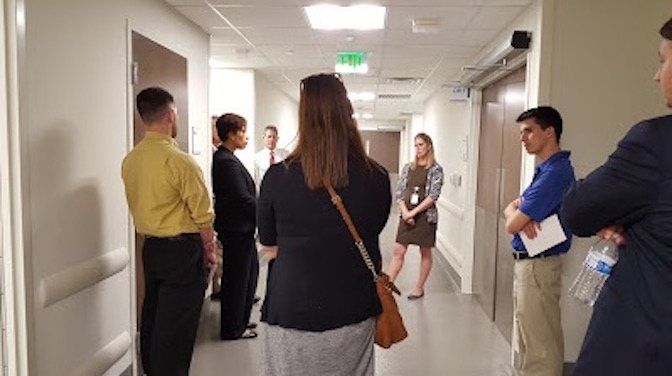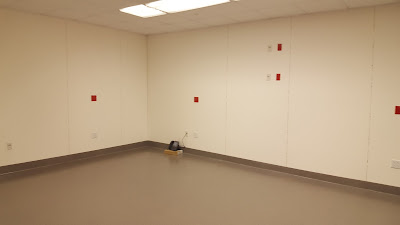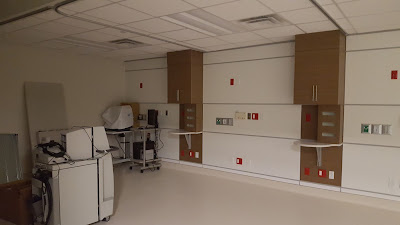On Friday, I had the unique opportunity to tour an empty ambulatory surgical center. The facility has been built in compliance with regulations, but the clinic is still in the process of raising funds for surgical equipment. So I got to see purely what the law requires, before the ambulatory surgical center is specialized for the types of surgery to be done.
My tour had nothing to do with abortion directly. As I’ve mentioned on this blog before, I am a graduate of the University of Miami and now live about an hour and a half away. The world-renowned Bascom Palmer Eye Institute is part of the university health system and houses the medical school’s department of ophthalmology. Bascom Palmer recently opened a satellite facility in my area and the local alumni club (of which I’m a board member) took a tour.
You can get basic eye care at Bascom Palmer, but its focus is on chronic eye diseases, like glaucoma, and rare cases, like pediatric cancer of the eye. The goal is to provide local access to top-notch specialty care so that the neediest patients don’t have to travel to Miami.
Thus the ambulatory surgical center, where Bascom Palmer doctors will perform a variety of eye surgeries. Complications are rare, but risks of eye surgery include infection, retinal detachment, and in the worst-case scenario, loss of vision. An internet search reveals only one person who died from eye surgery, and that occurred at a troubled facility that had recently killed two other patients in cosmetic procedures.
Bascom Palmer’s ambulatory surgical center takes up most of the second floor of the two-story building. The non-surgical portion of the building is already open and treating patients.
Without further ado, here’s that horribly burdensome wide hallway you’ve heard so much about:
An operating room:
And the recovery area, sans beds and curtains:
Aesthetically, Bascom Palmer has gone above and beyond with things like sleek wood cabinets and doors that open by sensor, in keeping with the modern look of the building overall. But the basics of the ambulatory surgical center struck me as unremarkable. Of course outpatient surgeries should be performed in a place like this. This is what the abortion lobby is fighting?
As I said before, risk-wise, eye surgery compares favorably to abortion. Not once did our tour guide complain that the regulatory standards were too stringent. Fundraising is part of her job description, but apparently it didn’t occur to her to motivate us as potential donors by framing ambulatory surgical center regulations as part of a war on kids with eye cancer. She and everyone else we encountered were very proud of the facility (as they absolutely should be) and eager to give Bascom Palmer’s patients the best possible care.
It isn’t cheap. Bascom Palmer is a not-for-profit, and it took on a multi-million-dollar loan to build the facility (including the non-surgical parts). But they’re willing to do it, because the profit motive is secondary; their primary motivations are concern for patients, and professional pride.
File under “abortion is not health care.”
Editor’s Note: This article was first published at Secular Pro-Life on March 7, 2016, and is reprinted here with permission.










